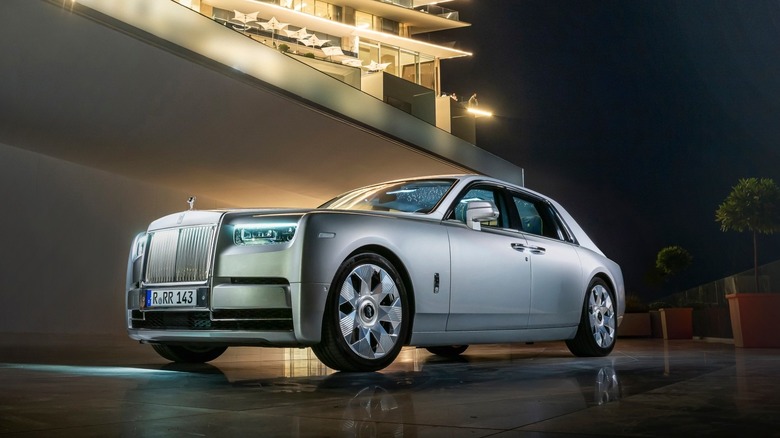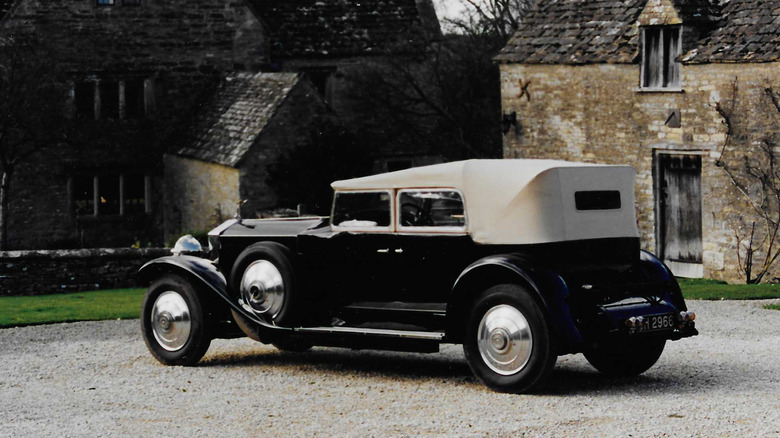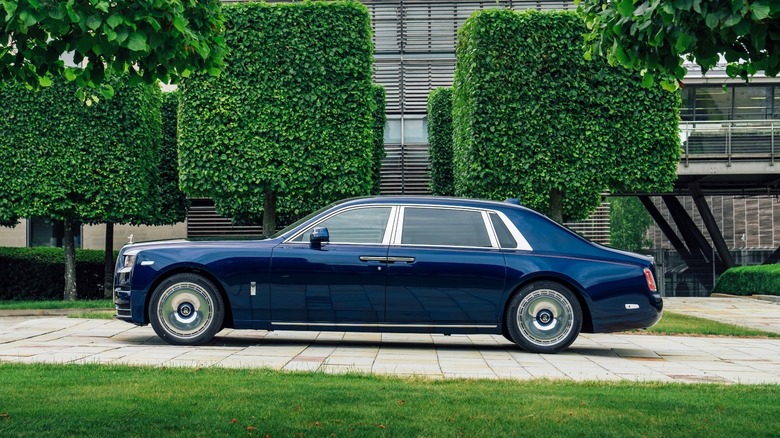A Look Back At The History Of The Rolls-Royce Phantom
The Rolls-Royce Phantom is one of the most opulent cars on the road today – and it's one of the longest-lasting. Introduced in 1925 as a replacement for the Rolls-Royce Silver Ghost, the Phantom nameplate has existed for nearly 100 years. While it hasn't been in production continuously for the last century, the Phantom has been around most of that time and it's always been an icon of upscale motoring.
The continued production of the Phantom is driven by a desire to be the most plush, most elaborately appointed, and most prestigious automobile on the road. Words like "sumptuous" and "grandeur" line Rolls-Royce's catalogs, with good reason. The high-end materials and precision construction of the Rolls-Royce Phantom, inside and out, make the Rolls driving experience like nothing else on the road.
Few vehicles, even those in the most expensive price brackets, come close to the kind of luxury that the Phantom can provide. So, what was the original Phantom like? How has it evolved over the years? And what does the newest and most lavish Rolls-Royce sedan have to offer?
Early Phantoms
When the Phantom was first produced, it was a coach-built car. Coachbuilding was a process where an auto manufacturer would produce a vehicle's chassis, engine, transmission, and wheels, then send that 'rolling chassis' off to someone else to finish the job. This way, buyers could have the vehicle's body built however they wanted. As a result, some of the rarest and most sought-after Rolls-Royces ever were produced during the early Phantom days.
Phantoms received numerical designation, so, naturally, the first Phantom was called the Phantom I. When the Phantom II rolled around in 1929, Rolls-Royce was ready to expand the offering. There was a performance-oriented Phantom Continental II model with a shorter wheelbase and a massive 7.3-liter V12 engine, with a top speed of 95 mph – not very fast by modern standards but formidable for its day.
The coachbuilding industry dwindled considerably over the years, with only one coachbuilder left by 1968 — Rolls-Royce's in-house company, Mulliner Park Ward. Still, Rolls-Royce continued to produce Phantoms until 1992, spanning four more generations, up to the Phantom VI. In those first 67 years, Rolls-Royce produced vehicles for the most prestigious customers, including British royalty, with customers including Queen Elizabeth II and Prince Harry, who came to his wedding in a Rolls.
Modern Phantoms
After an 11-year hiatus, the Phantom returned in 2003 with the Phantom VII. BMW purchased Rolls-Royce in 1998 and went right to work, developing a new Phantom worthy of the name. Thanks to a 6.75-liter V12 engine, the Phantom VII — all three tons of it — could go from zero to 60 mph in just 5.9 seconds. In 2007, Rolls-Royce debuted a new convertible model, the Phantom Drophead Coupe. The Drophead maintained the same overall performance as the stock Phantom VII; it just offered a brand new way to show off.
The next big change came in the 2018 model year. The 2018 Phantom VIII set new standards for opulence and performance. Alongside a more powerful engine, quicker acceleration, and updated styling, Rolls offered new options, including the Starlight Headliner that replicated a star-filled night sky, power-operated tables for rear seat passengers, and exceptional selections of wood veneers for the cabin. Well-heeled buyers could even get custom artwork embedded in their Rolls' interior.
The Phantom has seen only the lightest design updates and embellishments since its 2018 makeover. That's deliberate. Rolls-Royce has stated that their clients don't want any changes. Don't expect revolutionary change in the Phantom's trajectory anytime soon. According to Rolls, this one is already perfect.


